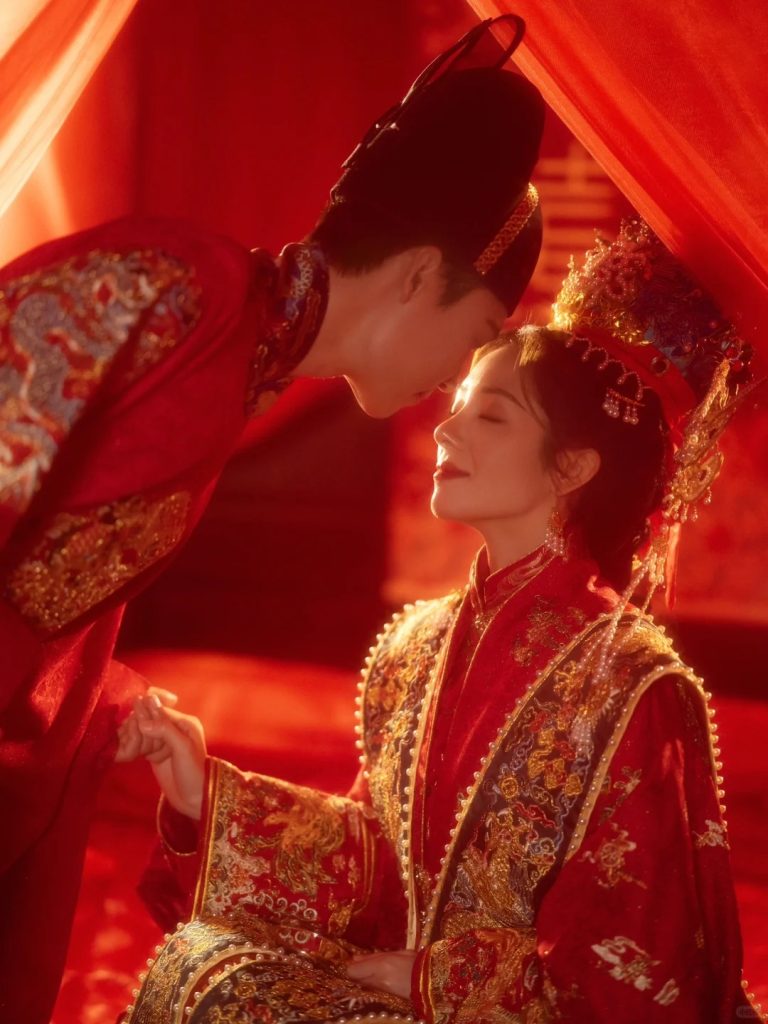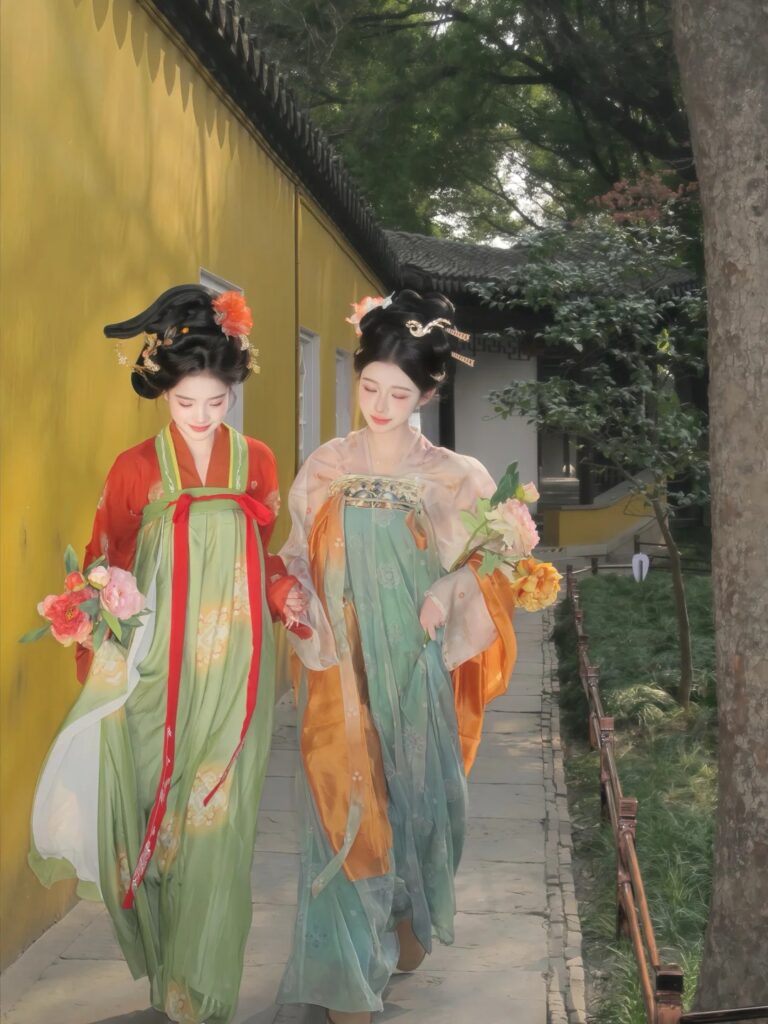Song Dynasty: Elegance and Simplicity – How the Song People Embodied Refined Confucian Aesthetics

The Song Dynasty (960-1279) was a period of cultural prosperity in Chinese history, where Confucian ideals were further emphasized and integrated into daily life. Compared to the opulent and open styles of the Tang Dynasty, the Song Dynasty’s aesthetic was more restrained, refined, and elegant, reflecting a distinct Confucian grace. This refined aesthetic was not only evident in clothing but also deeply embedded in the cultural values, lifestyle, and social customs of the Song people.

I. Song Dynasty Clothing: Simplicity as Elegance, Refinement as Virtue
1. Men’s Clothing: Scholarly Grace and Modest Style
The rise of the scholar-official class in the Song Dynasty elevated the status of literati, and their clothing reflected their scholarly and refined demeanor.
- Zhiduō (直裰): A common long robe worn by scholars, characterized by clean lines, minimal decoration, and subdued colors, reflecting Confucian ideals of restraint and humility.
- Round-Collar Robes & Cross-Collar Gowns: Men’s attire featured plain, deep-colored robes with minimal embellishments, paired with a headscarf or square kerchief, creating a dignified and scholarly appearance.
- Official Attire: The clothing of government officials retained the Tang Dynasty’s insignia system but adopted more understated patterns and muted color schemes such as blue, brown, and black, symbolizing a more refined and composed demeanor.

2. Women’s Clothing: Graceful and Modest, Flowing and Elegant

Unlike the extravagant and vibrant styles of the Tang Dynasty, Song Dynasty women’s clothing emphasized modesty, subtle elegance, and natural beauty.
- Ruqun (襦裙): A popular outfit consisting of a narrow-sleeved blouse with a cross or round collar, often worn with a flowing, pleated hundred-fold skirt, creating a layered yet lightweight aesthetic.
- Beizi (褙子): A signature outerwear piece for women, characterized by a long, straight cut with subtle patterns and soft, natural colors, enhancing a refined and graceful aura.
- Hairstyles and Accessories: Song Dynasty women preferred low buns, minimal makeup, and delicate hairpins, in contrast to the extravagant headpieces of the Tang era, favoring a natural and understated elegance.

II. The Song Dynasty’s Refined Aesthetic: Poetry, Culture, and Scholarly Elegance
The Song Dynasty was a golden age of literati culture, where poetic and artistic refinement permeated daily life, shaping a uniquely Confucian and sophisticated aesthetic.

1. Song Dynasty’s Aesthetic Philosophy: As Subtle as Tea, As Refined as Poetry
The Song people valued subtlety, elegance, and restraint, which influenced various aspects of life, from tea culture to artistic expression.
- Tea Culture: The art of tea-making flourished in the Song Dynasty, and tea ceremonies became a key element of literati life, representing aesthetic sophistication and inner cultivation.
- Calligraphy and Painting: Song art focused on “atmospheric beauty”, embracing simplicity over excess. Renowned artists like Su Shi and Mi Fu in calligraphy, and Zhao Ji in fine-line painting, reflected the literati’s poetic and refined tastes.
- Furniture and Artifacts: Song Dynasty furniture and ceramics embodied a balance of functionality and aesthetics, favoring sleek designs and soft color palettes, such as black-glazed pottery and celadon ceramics, to convey a sense of understated sophistication.
2. The Scholar-Gentry Culture: Virtue and Refinement as a Way of Life
As the Song Dynasty prioritized Confucian ideals, scholars not only shaped governance but also influenced social customs and fashion.
- Emphasis on Knowledge and Cultivation: The imperial examination system flourished, fostering a culture where scholars pursued knowledge and self-cultivation, embodying Confucian ideals of dignity, wisdom, and humility.
- Clothing as a Reflection of Character: Literati attire adhered to the principle of “elegance in simplicity”, avoiding extravagance while maintaining a refined and dignified presence.

III. The Influence of Song Dynasty Aesthetics on Modern Life
Today, Song-style Hanfu has gained popularity as people rediscover its refined and graceful charm.
- Modern Hanfu designs often incorporate Beizi, Ruqun, and Zhiduō, making them suitable for contemporary wear.
- The Song Dynasty’s emphasis on elegant living continues to inspire tea ceremonies, calligraphy, and classical music, providing a way for people to cultivate mindfulness and inner peace.
The beauty of Song Dynasty culture lies not in extravagance, but in its depth, subtlety, and intellectual elegance. Its philosophy of “less is more” continues to influence modern aesthetics, reminding us that true beauty often lies in simplicity and refinement.

The Song Dynasty was a unique cultural era where clothing embodied Confucian refinement, and aesthetics were deeply intertwined with intellectual and moral values. This graceful and restrained style was not just about fashion but also a way of life—one that emphasized inner virtue over outward display.
In today’s fast-paced world, perhaps we can draw inspiration from the elegance and simplicity of the Song people, embracing a lifestyle that values serenity, refinement, and cultural depth.





Responses